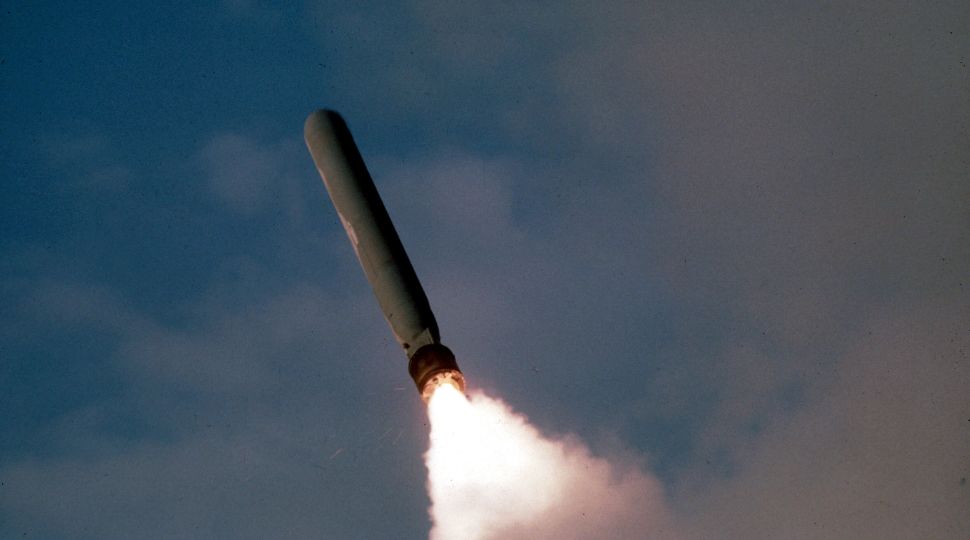U.S. Development of Intermediate-Range Missiles after Its Withdrawal from the INF Treaty

The End of the INF Treaty
On 18 August 2019, the U.S. flight-tested a cruise missile from a ground mobile launcher over a distance of 500 km. Testing, possession, and production of land-based cruise and ballistic missiles with ranges of 500-5,500 km were prohibited by the Intermediate-Range Nuclear Forces (INF) Treaty, signed by the U.S. and USSR in 1987. The U.S. withdrew from the treaty on 2 August in response to a years-long violation of the accord by Russia, which has deployed 9M729 (SSC-8) cruise missiles. These nuclear-capable missiles are able to target most of Europe. The U.S. calculations were also influenced by the expansion of China’s arsenal that otherwise would have been banned by the INF treaty if it had been a party to the accord. The U.S. test shortly after its exit from the INF treaty was possible because the Americans used a modified version of the sea-based, conventional-armed Tomahawk missile. Adaptation of the missile was facilitated by earlier research and development activities, permitted by the treaty. The U.S. started these activities in late 2017 as part of its efforts to bring Russia back into compliance. These works accelerated following the U.S. suspension of its obligations under the INF Treaty in February 2019, which was meant as another warning to Russia.
New Missile Plans
The U.S. has so far planned to introduce new conventionally-armed missiles on ground mobile launchers but with parameters permitted by the INF treaty. It has sought these capabilities to strengthen the deterrence of Russia and China and facilitate the capability to counter their offensive and defensive systems, which might severely impede the operations of the U.S. and allied forces in a conflict. Mobile ground launchers are hard to detect and to destroy and can be thus more safely stationed closer to the area of potential fighting and used much more quickly than missiles based on aircraft and surface ships, which are more vulnerable. Hence, land-based missiles would help counter an enemy attack in its initial phase.
Withdrawal from the INF treaty and the extension of missile ranges to over 500 km would broaden their set of targets. The U.S. is currently developing several such systems, most of which will not enter into service before 2023-2025. A modified Tomahawk could be available already in 2021, but it is not clear if the U.S. will further pursue this project. Apart from the Tomahawk (with a range between 1,500 and 2,500 km, dependent on the weight of the warhead), the more advanced and stealthy air-launched JASSM missile (1,000 km range, to be extended up to 1,600 km) also could be adapted. The U.S. is also developing ballistic missiles that are much faster but also easier to detect in flight. This includes an IRBM with a range between 3,000 and 4,000 km, which is to be tested in November. The range of the emerging PrSM missile is likely to be extended from 499 to around 700 km. The new MMRM missile (range of over 1,000 km) might turn out
to be a ballistic system as well. Additionally, the U.S. is working on the hard-to-intercept but very expensive SFM hypersonic missile (2,250-3,000 km range).
Implementation of the Pentagon’s plans will require sustained funding from Congress, which is uncertain due to resistance from the Democrats, who have the majority in the House of Representatives. In their opinion, the Trump administration should have continued to pressure Russia on compliance with the treaty. They also question the military rationale for previously banned cruise and ballistic missiles in addition to their existing air and sea-based equivalents. Moreover, they are concerned about tensions among U.S. allies and costly arms races with Russia and China. As one of their conditions for funding the programmes, they call on the administration to present the consent of least one ally to host such systems.
Regional Conditions
The Trump administration seeks to deploy new land-based missiles first and foremost in eastern Asia to better counter China. That country possesses the largest arsenal in the world of conventional and nuclear ground-launched missiles with ranges up to 5,500 km. Currently, the U.S. strike forces in the region rely mostly on cruise missiles based on ships and aircraft, which overall are costlier than land-based launchers. Their bases are also separated by large distances and vulnerable to Chinese strikes. However, the deployment of new U.S. ground-launched missiles to Asia would face substantial challenges. While IRBMs could reach China from the American island of Guam, missiles with shorter ranges would have to be stationed in Japan or South Korea. China is already trying to prevent that scenario by threatening U.S. allies with unspecific countermeasures.
U.S. officials have also signalled their interest in the deployment of new intermediate-range missiles in Europe. Many NATO members would be against such moves due to concerns about an escalation of tensions with Russia and a public backlash, as the stationing of U.S. nuclear missiles in the 1980s was met with massive protests in Western Europe. While the U.S. is currently developing only conventional-armed, ground-launched missiles of that range, they might also be perceived as destabilising, especially if they can strike deep into Russian territory, including Moscow. The new deployments likely would be backed by NATO members from its Eastern Flank, which emphasize strengthening deterrence. At the same time, these countries approach the missile issue with caution. For example, Poland underscores that stationing such systems should be subject to a decision of all NATO members. The Alliance has not excluded such measures, but it is currently considering mainly other options of military response to Russia’s 9M729.
Russia seeks to deepen differences within NATO and blames the U.S. for the collapse of the INF treaty. It has warned that it will respond symmetrically to the testing, production, and deployment of American missiles. It has been also presenting the 9M729, which it has already deployed, as having a range of below 500 km and thus compliant with the INF treaty. For years, it has been countering U.S. accusations with allegations about the Americans’ Aegis Ashore missile defence site in Romania and a second installation under construction in Poland. Russia claims that these sites can be used to launch cruise missiles, as they are equipped with shipborne Mk41 vertical launch systems, such as the one used provisionally on a mobile platform in the recent Tomahawk test. In turn, the U.S. has been pointing out that Aegis Ashore lacks the software, hardware, and equipment needed to launch offensive missiles. It has also stressed that agreements with the host-nations of Poland and Romania allow only for the deployment of interceptors. Moreover, the stationing of offensive missiles in vulnerable fixed sites would be militarily ineffective.
Perspectives
The test of a Tomahawk missile shortly after the U.S. exit from the INF treaty was to demonstrate to China and Russia that the Trump administration has the political resolve and the U.S. has the technological capability to develop conventional, land-based intermediate-range missiles. Already in 2019-2020, the U.S. administration may begin talks with its allies on the deployment of these missiles in Asia and Europe. It cannot be excluded that the U.S. will strive to rapidly deploy the Tomahawk variant before the other systems are ready. The development of such an arsenal will depend, however, on the internal political dynamics in the U.S., including budgetary decisions in Congress and the 2020 presidential elections. Trump’s defeat may result in a change in the U.S plans.
Russia will present actual and alleged U.S. actions as a pretext for its own open build-up of land-based intermediate-range missiles. Following the Tomahawk test, Russia may flight-test its 9M729 missiles under a different name—as this would make it easier to use them to intimidate NATO public opinion—or other systems from this category. Subsequently, it may accuse the U.S. of deploying offensive missiles at its Aegis Ashore sites in Poland and Romania and then openly deploy its own missiles in Europe. The further enhancement of Russia’s arsenal will strengthen the grounds for the deployment of the new U.S. missiles in Europe. Despite the controversy over the missiles, NATO should consider the utility of such systems as a deterrent but also as bargaining chips in efforts to induce Russia to engage in arms control. Due to its geographical location and approach to deterrence, Poland may be mentioned in such discussions as a potential location for the stationing of the new U.S. missiles.






